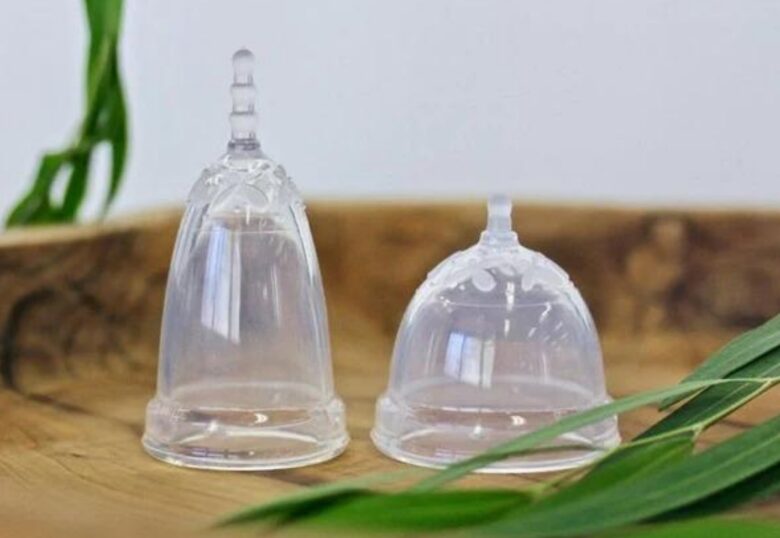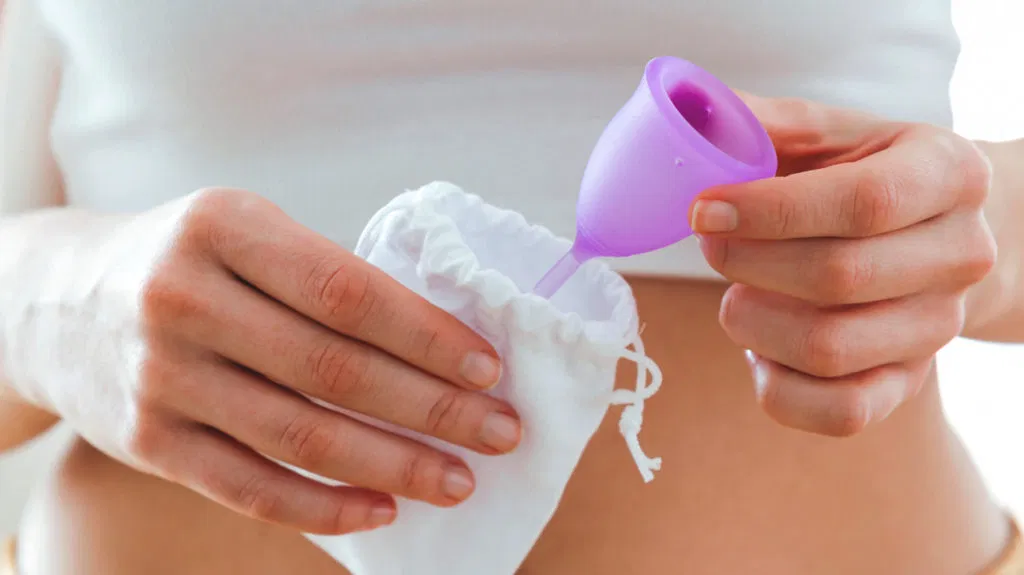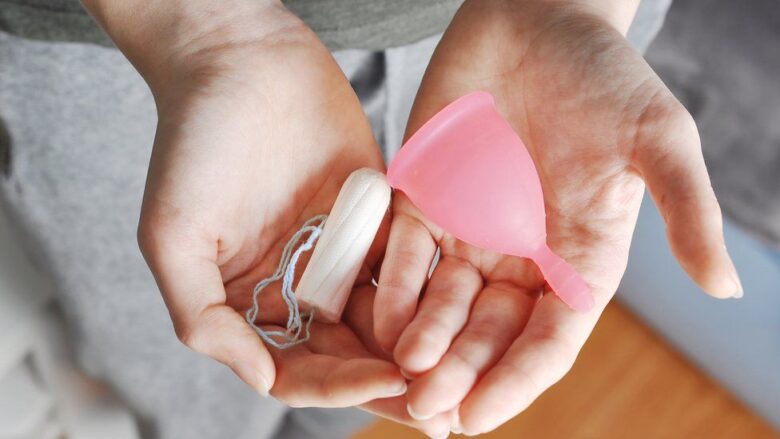Do you have concerns about the safety and effectiveness of menstrual cups? Say thanks to yourself, because you are at the right place where answers to all your possible questions regarding the use of menstrual cups are available. Continue reading!
For the women who are thinking of opting for menstrual cups instead of pads and tampons in their menstruation cycle, let just read through a brief description of menstrual cups. The menstrual cup is a highly flexible device made of medical-grade silicon. The bell-shaped side folds to give the cup the ability to gently insert into the vaginal opening to collect all of the monthly fluid. Another interesting thing about menstrual cups is that they are reusable. If you follow the proper hygiene protocol for storing them, you can keep them for many years to come.
But many women, especially teenage girls, feel afraid to use it. Reusable menstrual cups are as safe to use as sanitary pads or tampons. Inserting a menstrual cup won’t hurt your vagina unless you are not an expert and trying it for the very first time.
Here are answers to all the questions which are stacked in your mind about the safe use of menstrual cups.
Contents
Are menstrual cups healthy to use?
The first question which comes to mind after hearing the name of menstrual cups is whether they are safe to use or not. Periodic pads and tampons absorb monthly blood, but in the case of a vaginal cup, fluid is collected. Additionally, pads or tampons typically last 4-6 hours depending on the intensity of flow. In contrast, menstrual cups can remain in your vagina for more or less 8 hours to collect your blood. As a result, women have concerns that accumulating blood for such a long period of time will harm the natural structure of healthy bacterial colonies or vaginal pH. Isn’t pushing the menstrual cup hurtful to the vagina? Wouldn’t it be difficult to walk while carrying such a container? In order to make you feel relaxed, the answer to all of your questions is no, after a thorough investigation.
Using the menstrual cups available online can relieve you of such disturbing thoughts. These menstrual cups are made after considering all the medical terms and conditions. Menstruation blood adheres to the walls of your menstrual cup, which has nothing to do with the bacterial colonies or pH of your vagina. They don’t cause skin rashes, dryness or irritation, as do sanitary pads and tampons. You can not only walk comfortably while using menstrual cups but can also enjoy swimming, exercising, running etc. Isn’t that super amazing and comforting?
How we can make it durable for longer periods of time?
Using reusable menstrual cups is pretty simple, but you need to follow proper sanitization protocols before and after every use. If you take for granted the hygiene standards of your menstrual cups, you can face many unwanted problems. It requires a few minutes of your precious time to clean and store them before and after every use. This is the reason many women prefer to use disposable pads or tampons. But we will give you a few easy and quick tips to follow when cleaning and storing your menstrual cups.
Cleaning before using menstrual cup for the first time
Clean your unused menstrual cup with warm water and soap. You can also use menstrual cup wash if you have enough money. Use a brush or tissue paper to remove dust or any other residual build-up. Rinse off your menstrual cup under warm running water and set it to dry. You can now insert your cup inside your vagina and collect the menstrual fluid for 6-8 hours as you wish.

After use washing
After use, washing looks messy to many people. Gently protrude out your menstrual cup by holding the stem in your fingers. Carefully empty all your collected fluid or blood clots into the toilet and rinse the empty menstrual cup under the flowing water. Then wash it with soap or specified menstrual cup wash. Use toothpicks to clear any stuck debris inside the stem of your menstrual cup. Rinse under warm water and dry to reuse.
Sterilization
After you are done with your menstruation cycle, you have to sterilize the used menstrual cups to disinfect them. In order to do this, boil water in a pot and place menstrual cups for 3 to 5 minutes. Because long exposure to boiling water can harm the texture of your plastic menstrual cups. After 3-5 minutes, take them out of the boiling water pot and set them aside to dry on their own. You can also use UV sterilizers instead of boiling water for this purpose.

Source: healthline.com
Storing of menstrual cup
The longevity of a menstrual cup depends on proper storage as well. After complete dry, store your menstrual cup in a ventilated area. Never keep them in a plastic bag or airtight container as moisture cannot evaporate without airflow and this can support growth of unwanted microbes.
Are menstrual cups cost-saving?
The answer to this question is happily yes. When you purchase a pack of sanitary pads or tampons, you have to pay fewer amounts as compared to a menstrual cup. But you know what, that amount is kind of lost when using pads and tampons as they are disposable and you have to change them frequently. In the case of menstrual cups, you have to pay a few extra dollars, but you do not have to purchase them to reuse again and again every month. Moreover, chances of leakage and unpleasant odor are negligible when using menstrual cups. But you can face such embarrassing situations with absorbent pads or tampons.

Source: bbc.com
After such an extensive study, we can conclude that the use of a menstrual cup is not only safe and healthy for your body. Its use is also friendly to the environment. Once you’ve overcome the fear of its use, the menstrual cup will become an easy and necessary part of your period life.
